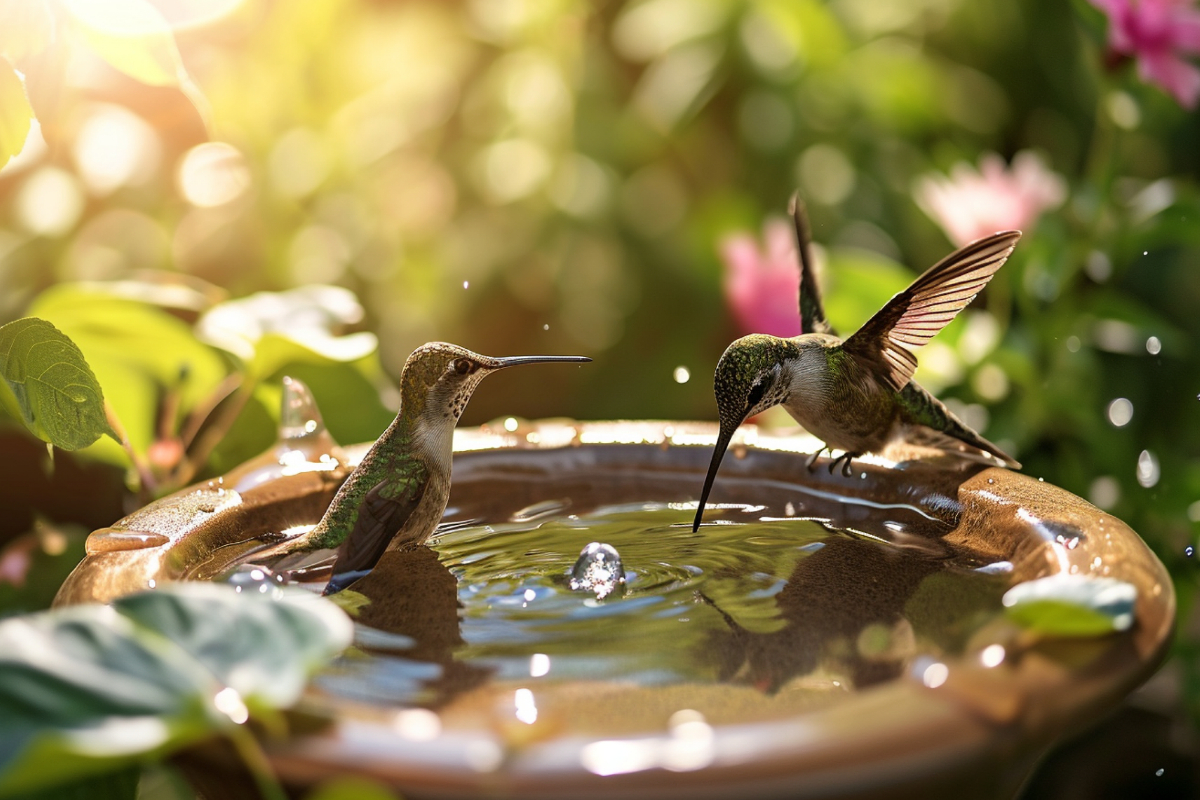Hummingbirds are fascinating little birds that captivate us with their beautiful feathers and energetic nature. They have long, slender beaks that are perfectly designed for sipping nectar. While they are a joy to watch in our gardens, bathing is actually a crucial activity for hummingbirds to keep them looking and feeling their best.
Unlike other birds, hummingbirds have unique bathing habits. They don’t fully submerge themselves in water or splash around. Instead, they prefer to flutter through a fine mist or skim the surface of shallow water. Bathing serves several important functions for hummingbirds.
Firstly, bathing helps hummingbirds groom their feathers. They carefully preen each feather to realign barbules and remove anything that could affect their ability to fly. Additionally, as they preen, hummingbirds spread oil secreted from their preen gland evenly across their feathers. This oil helps waterproof and protect their feathers.
Bathing also helps hummingbirds cool down on hot summer days. In addition to drinking and perching in shady spots, bathing provides them with a refreshing way to beat the heat. Furthermore, bathing helps remove feather mites and other parasites that can be problematic if allowed to accumulate.
While hummingbirds primarily get their hydration from flower nectar and feeders, bathing meets other essential needs for their health and feather maintenance. Therefore, providing a suitable birdbath is vital for their well-being.
When it comes to birdbaths, hummingbirds have specific preferences. They prefer shallow water, typically around 1-2 inches deep, as traditional deep bird baths are not suitable for their small size. Hummingbirds are attracted to the sight and sound of moving water, such as from a mister, fountain, or dripper. They also feel more secure bathing in an open, elevated location where they can easily watch for predators. Bright colors around the birdbath, such as vibrant flowers or decorations, catch their eye and invite them to explore. Lastly, hummingbirds avoid baths with dirty, stagnant water, so it’s important to change the water frequently to keep it fresh and appealing.
To create an ideal hummingbird birdbath, you can make a few simple modifications. Adding rocks, pebbles, or marbles can create shallower sections of water for safe bathing. Incorporating a mister, dripper, or small fountain can provide the sight and sound of moving water that hummingbirds love. Positioning the birdbath close to their existing food sources and in a sunny spot will make it easily accessible and keep the water warm. Painting the bath a bright color or surrounding it with bold flowering plants can make the area more attractive to hummingbirds. Lastly, regularly changing the water will ensure it remains fresh and inviting.
When and where you place your hummingbird birdbath is also important. Spring and summer are the best times to put out a birdbath for hummingbirds, as they are most active during these seasons. Ideally, the birdbath should be positioned in an open area with good sightlines to watch for danger. It should also be close to existing food sources and resting spots like trees and feeders. Placing it in a consistently sunny spot will help keep the water warm, and ensuring it is on a solid, level surface or hung securely will provide stability for the hovering hummingbirds.
There are various wonderful water features you can try to attract hummingbirds to your birdbath. Adding a mister kit allows hummingbirds to fly through the mist, creating a unique bathing experience. A small solar-powered fountain can provide pleasant trickling water sounds. Drippers or rain chains can create droplets on the surface, attracting hummingbirds’ attention. Planting bright flowers around an open terra cotta saucer filled with pebbles and water can create an oasis-like environment. The options are endless, so observe what water features hummingbirds are drawn to in your yard and have fun experimenting.
Bathing is a vital activity for hummingbirds that goes beyond just getting clean. It helps them care for their feathers, distribute protective oils, cool down, and remove parasites. By providing an enticing birdbath that meets their preferences, you can support these behaviors and benefit the hummingbirds visiting your yard. So, grab some pebbles and create a birdbath paradise for these beautiful birds. And don’t forget to keep the water fresh and inviting!
